Dodge Journey: Removal
2.4L
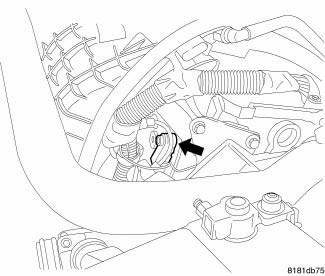
Fig. 45: Locating Knock Sensor
The knock sensor bolts into the side of the cylinder block in front of the starter under the intake manifold.
1. Disconnect and isolate negative battery cable.
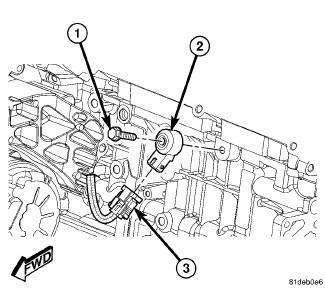
Fig. 46: 2.4L Knock Sensor
2. Disconnect electrical connector (3) from knock sensor (2).
3. Remove bolt (1) and knock sensor (2) from engine block.
2.7L
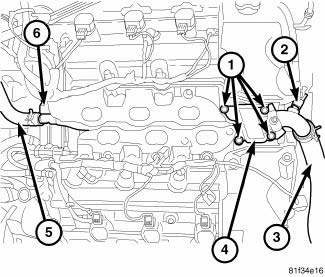
Fig. 47: Water Housing Outlet Tube 2.7L
- - Bolts
- - Coolant Temp Sensor Connector
- - Radiator Upper Hose
- - Water Housing Outlet Tube
- - Heater Hose
- - Retaining Clip
WARNING: Do not remove pressure cap with the system hot and under pressure because serious burns from coolant can occur.
1. Drain cooling system. 2. Disconnect and isolate the negative battery cable.
3. Remove lower intake manifold.
4. Remove radiator upper hose (3) at water housing outlet tube (4).
5. Remove heater hose (5) from water housing outlet tube (4) at rear of engine.
6. Disconnect water housing outlet tube (4) from retaining clip (6) at rear of engine.
7. Disconnect electrical connector (2) from coolant temperature sensor.
8. Remove 4 bolts (1) attaching water housing outlet tube (4) to cylinder heads.
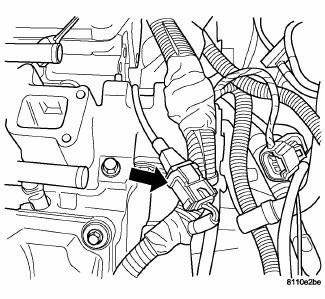
Fig. 48: Knock Sensor Connector
9. Disconnect electrical connector from knock sensor.
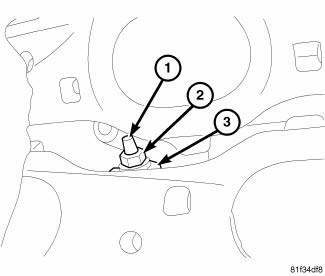
Fig. 49: Knock Sensor 2.7L
- - Stud
- - Nut
- - Knock Sensor
10. Reposition the water housing outlet tube and remove nut (2) from knock sensor mounting stud (1).
11. Remove knock sensor (3) from engine block.
3.5L
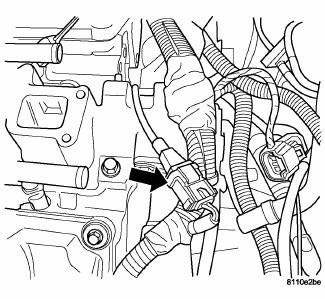
Fig. 50: Knock Sensor Connector
1. Disconnect the negative battery cable.
2. Remove the upper intake manifold.
3. Disconnect the electrical connector.
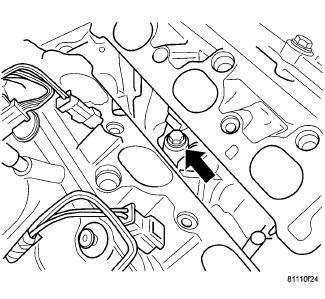
Fig. 51: Knock Sensor Location
4. Remove the knock sensor .
 Sensor, knock
Sensor, knock
...
 Installation
Installation
2.4L
Fig. 52: 2.4L Knock Sensor
CAUTION: Always torque knock sensors to the correct torque
specification. Over or
under tightening effects knock sensor performance. Ensure the electr ...
See also:
FLUIDS, LUBRICANTS, AND GENUINE PARTS
Engine
Chassis ...
Description, Operation
DESCRIPTION
The generator is belt-driven by the engine. It is serviced only as a complete
assembly. If the generator fails for
any reason, the entire assembly must be replaced. The generator produ ...
Refrigerant
DESCRIPTION
The refrigerant used in this air conditioning system is a HydroFluoroCarbon (HFC),
type R-134a. Unlike R-12,
which is a ChloroFluoroCarbon (CFC), R-134a refrigerant does not contain
...
